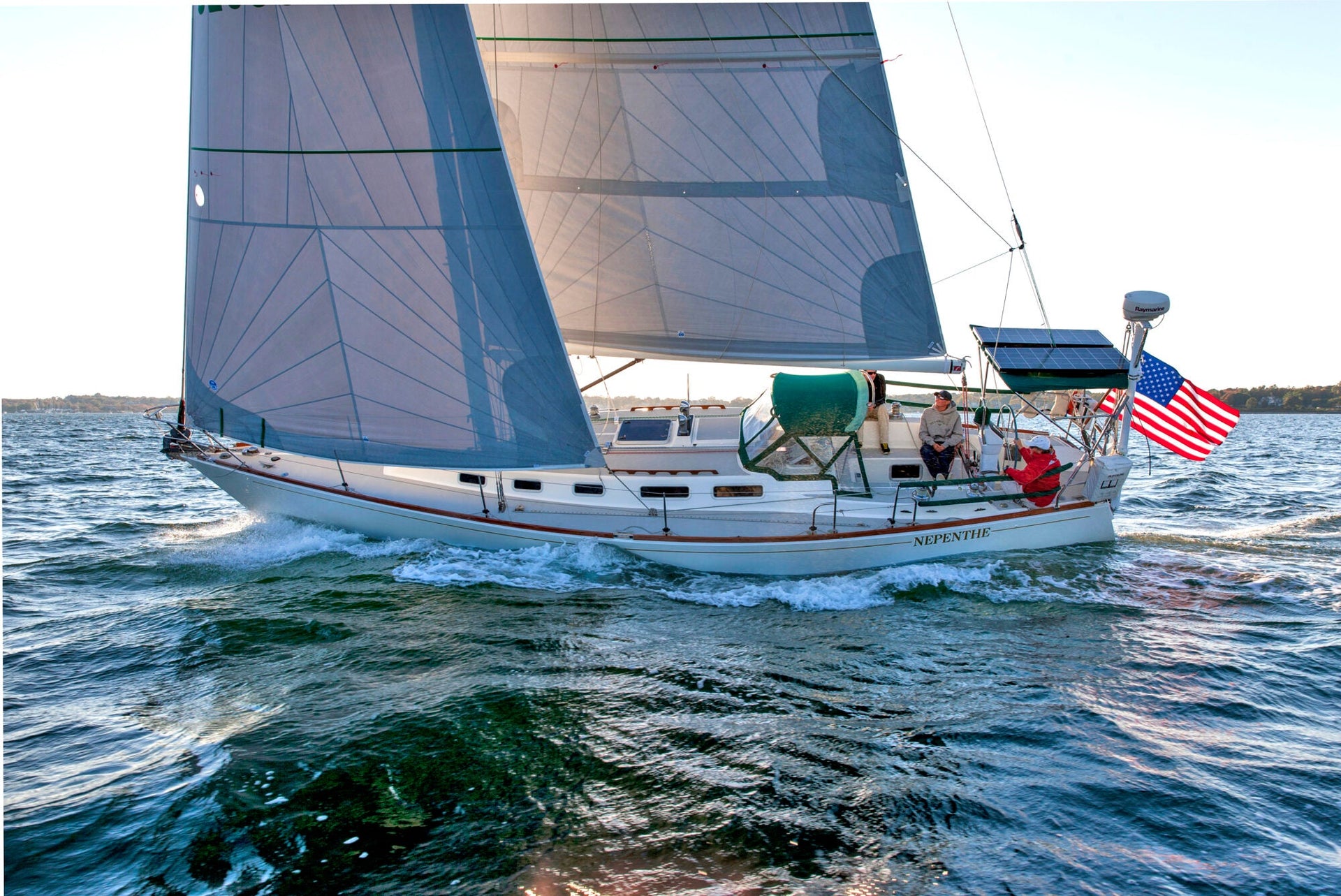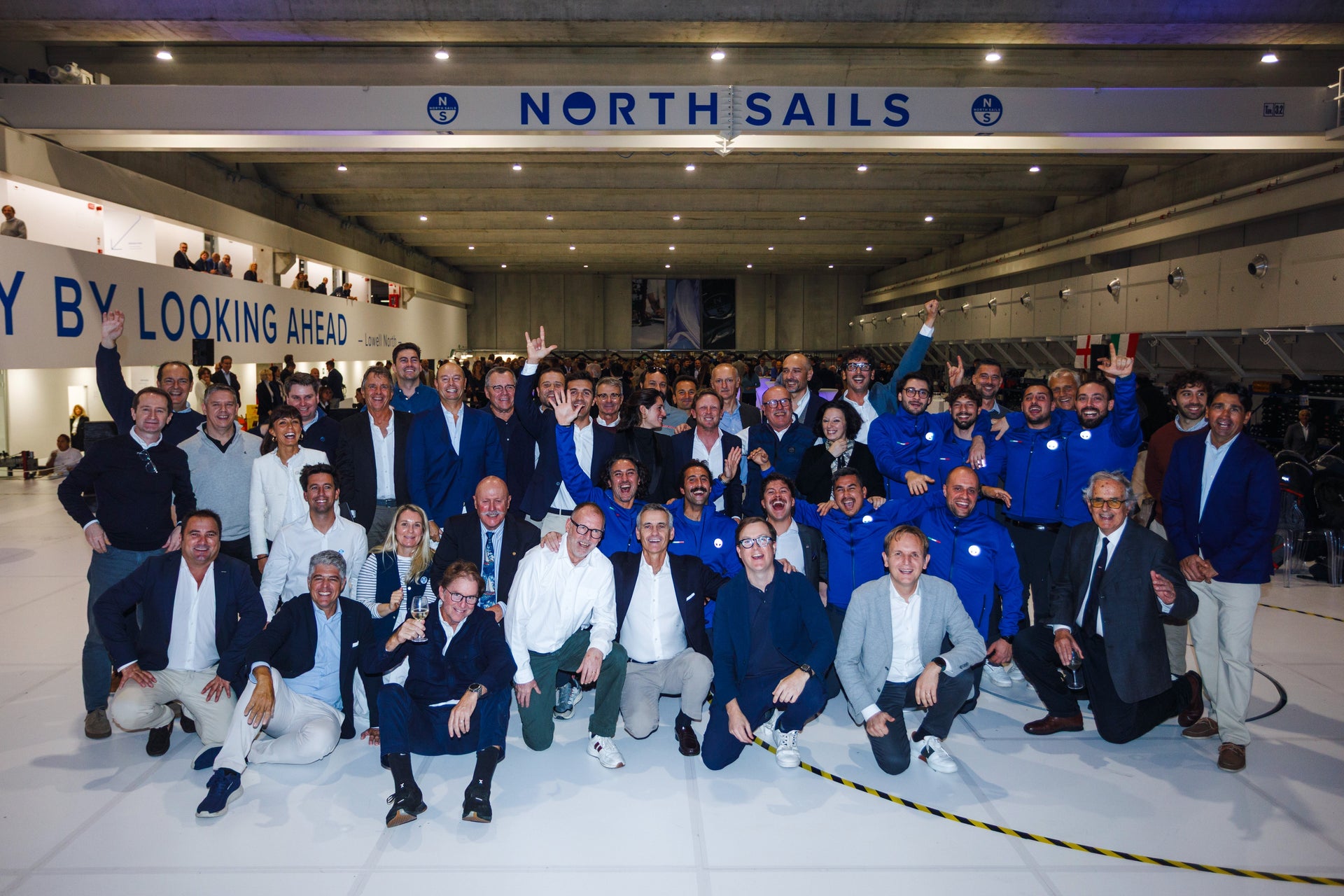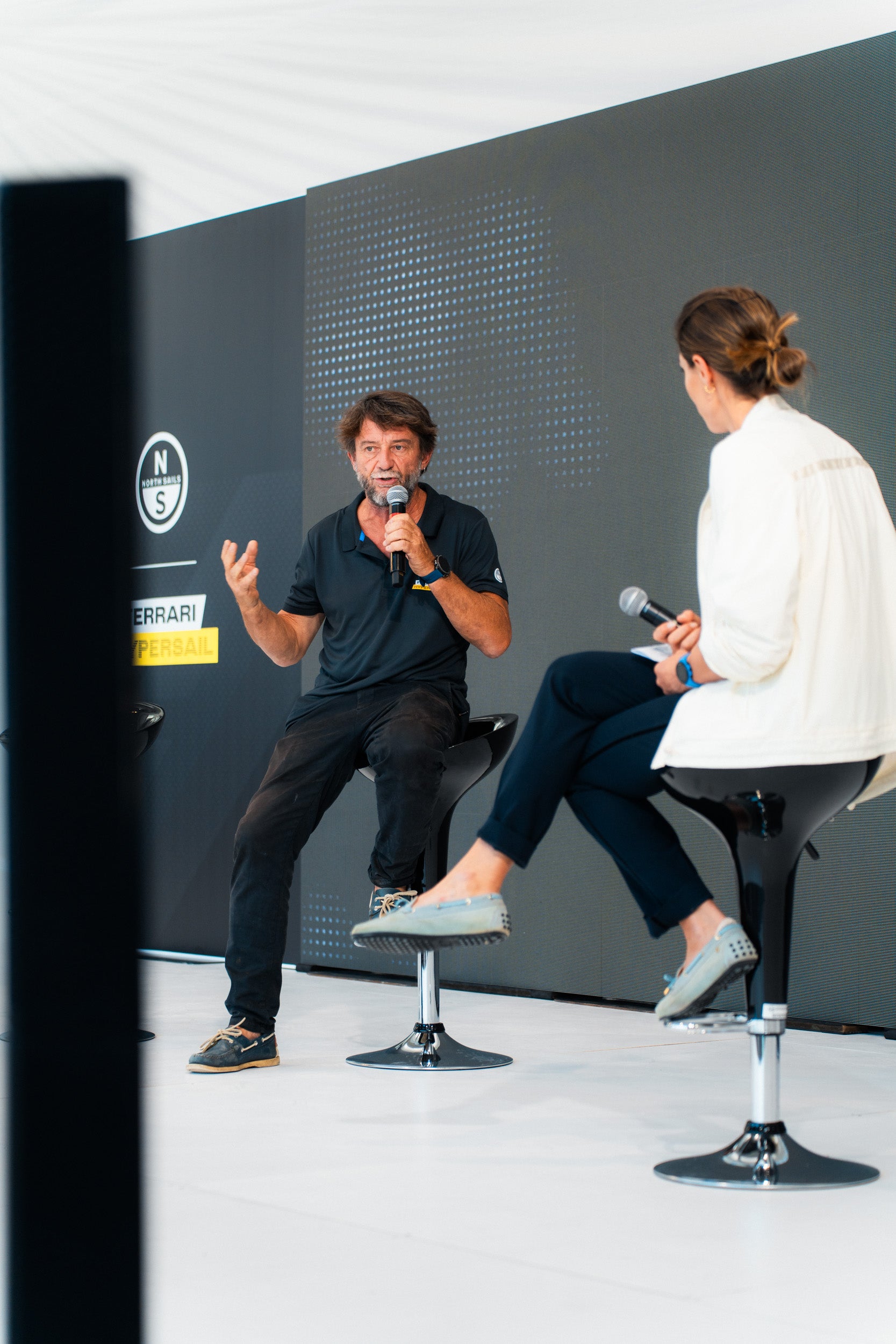BEST SAIL INVENTORIES FOR CRUISING

Day Sailing vs. Coastal vs. Bluewater
One of the many great things about sailing is the ability to choose how long you want to be out on the boat. Day sailors prefer to sleep on dry land, while coastal cruisers might go off for a weekend or even longer. Bluewater sailors like to get away from land altogether, some for as long as they can. Free time and sailing experience do play a big role in determining the type of sailing you do; often, beginners start off as day sailors and increase their time on the boat as their skills improve.
Though a wide variety of sailboats could be adapted to fit any of these time-based sailing specialties, some will obviously be better qualified than others for each one—especially if you’re looking to head offshore. The same is true of your sail inventory. For maximum enjoyment, it’s important that both boat and sails match the time frame you choose, which is why the North Sails cruising experts put together the following summary of what you’ll need for each type of sailing adventure.
Best Equipment for Day Sailing
Cruising daysailers are typically 25-40 feet long, though there are some purpose-built models as big as 50 feet. Day sailing is a great starting point, because it prioritizes a relaxed time on the water without the added challenges of darkness or bad weather.
Most daysailers have a fairly simple sail plan that includes a mainsail and jib or genoa. These can be built of NPC Cross-Cut materials. (If your boat is one of the recent performance daysailer designs, you may want to step up to 3Di OCEAN.
Struggling with sail handling? Consider adding a furling system for jib, main, or both.

Best Equipment for Coastal Cruising
Coastal cruising boats need enough cabin space for the crew to sleep comfortably and have bad-weather shelter, so they are generally in the 30-55 foot range. Both boat and sailors need to be ready for a wider range of weather conditions, as well as the occasional after-dark arrival, and both increase the focus on efficient sail handling systems. You’ll also need a sail inventory that can handle winds over 25 knots.
We have several sail materials that match this type of sailing, including NPC CROSS-CUT or Radian, NPL TOUR, and 3Di OCEAN. The key is to match the sails to your boat and preferred type of sailing. If you’re heading south for the winter, Radian will provide the best combination of longevity, durability, and ability to handle high heat and UV. For performance cruisers, 3Di Ocean is a great fit. Your local North expert can help determine which materials would best match your boat and cruising plans.

Best Equipment for Bluewater Sailing
Bluewater boats and crews will sail away from the conveniences (and stresses) of shore life for many days at a time, so they need to be fully self-sufficient. Purpose-built bluewater cruisers are generally larger than 40 feet, with sail-handling systems designed to handle any kind of weather. For a bluewater sail inventory the priority is durability, because despite the worldwide coverage of North Sails lofts, there’s no off-season—repairs will always slow down the next voyage.
UV is also a big concern. Dyneema has very high strength and toughness, and our NPL TOUR ULTRA paneled sails have been setting the bluewater standard for many years. 3Di ENDURANCE is a great crossover option that provides both offshore durability for cruising and high-level racing performance. 3Di OCEAN will provide performance without sacrificing durability, which is the best option for cruising sailors. To figure out the best materials that will help you achieve your bluewater dreams, talk to your local North expert. Bottom line– no matter what upwind sails you choose, you will not be disappointed.

Easier sailing
Whether you’re a first-time day sailor or a seasoned offshore cruiser, there are many innovations that will help make sail-handling easier. Mainsail luff track systems, inner forestays for heavy weather jibs, and small bowsprits for setting downwind sails are all increasingly common in harbors and marinas around the world, because they reduce the time and aggravation in changing sails.
For day sailing and coastal cruising, furling jibs are standard. More and more boats are adding furling or full-batten mainsails as well. Another innovation that can help ease mainsail stowage is the Quickcover. As the name suggests, it’s a cover that’s always right there when you need it—and that means a longer lasting sail, because you won’t forget or find it too much trouble to protect your investment from UV.
Another addition that will help your downwind enjoyment is a cruising gennaker, along with a snuffer to make it easier to set and douse.

Increasing your boat’s possibilities
If you are a day sailor who aspires to coastal cruising, another important upgrade would be to add an inner forestay for a second jib. Another great addition is the Helix Furling Gennaker. It combines the power of an asymmetric spinnaker with the convenience of a Code Zero. Hoist it once and you have an easy-to-fly sail that will take you to that next harbor fast, even when your apparent wind angle is too far aft for your Code Zero reacher. Plus, this new gennaker is top-down furling, giving you a tight, neat furl that protects the sail.This addition will add versatility to your sail plan and allow you to carry less sails onboard.
If you are a coastal sailor who aspires to head offshore, there are several sail upgrades we recommend. You’ll definitely need a heavy weather jib, a storm jib, 3 reefs in your mainsail, and at least one versatile downwind sail that can be furled. Reefing the main will be easier if you add mainsail luff tracks and cars. For longer-distance downwind cruising, we recommend either a Tradewind or a Helix code sail on a furler.
Sailing is a lifestyle, and many of our customers who started out as beginner day sailers are now off on life adventures, cruising the world. Whether you’re keen to do more day sailing, go off on a coastal cruise, or head offshore to bluewater, the most important key to an enjoyable cruise is to have the right boat—and the sail inventory of your dreams.
FIND A CRUISING EXPERT REQUEST A QUOTE






